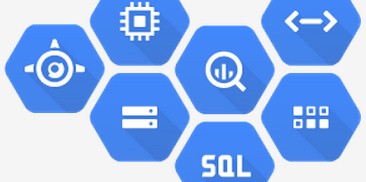Google Aligns Cloud Pricing With Moore’s Law

At its Cloud Platform Live event in San Francisco, Google launched several updates to its cloud services portfolio that aim to make it more competitive. Chief among these were massive price reductions, such that Google's cloud services are now priced far below those of its rivals. The company is also reducing the complexity of its pricing charts and adding automatic price reductions.
“Building an app in the cloud is still harder than it should be,” asserted Urs Hölzle, Google senior vice president, during his keynote address. “There are too many things to think about and too much work that's not really related to building your app.”
“Pricing is still way too complex,” he continued. “It may seem cheap by comparison with your on-premise alternatives, but there is still a lot of room for it to go down. Moreover, it seems like you need a PhD to figure out the best options. Should you use on-demand instances that are flexible or cheaper reserved instances? And should you pre-pay and if so how much and for how long are you going to use them? How do you optimize your cost versus performance?”
“We want cloud to be easier,” Hölzle added.
The Web giant observes that cloud pricing hasn't followed Moore's Law. Cloud prices are falling by 6 to 8 percent year, while hardware prices have dropped by 20 to 30 percent. Hölzle notes that the two curves shouldn't be identical since there are maintenance costs associated with running a cloud, but they should be closer together.
To narrow that gap, Google has instituted immediate on-demand price cuts. Compute Engine prices have been slashed 32 percent across the board for all sizes, regions, and classes. This means that the on-demand price is lower than the 3-year reserve price of most other providers, according to Hölzle.
For its platform-as-a-service offering, App Engine, Google has lowered pricing for instance-hours by 37.5 percent, dedicated memcache by 50 percent, and Datastore writes by 33 percent.
And for storage, Google is pricing all Cloud Storage at 2.6 cents per gigabyte, which for most users is a 68 percent decrease. The lower-cost Durable Reduced Availability (DRA) alternative is 2 cents, more than 20 percent cheaper. For its Big Query data analysis engine, Google is reducing the on-demand pricing by 85 percent.
“Together we are resetting the price curve in the cloud to where it should be, and this isn't a one-time step, this is a philosophy,” stated Hölzle. “The price trend of virtualized hardware should follow the price trend of real hardware, so it should follow Moore's Law.”
Google is also addressing what it sees as a confusing and complicated pricing structure by taking the lead to make pricing more transparent and customer-friendly.
When it comes to reserved instances, Google thinks that giving users a reward for having a predictable sustained workload makes sense, but understands that predicting infrastructure needs in advance can be a complicated and time-consuming process. Google's answer to this is "Sustained-Use Discounts.” Discounts start automatically when a virtual machine is used for over 25 percent of any one month, and when customers use a virtual machine for an entire month, they save an additional 30 percent over new on-demand prices, which adds up to a combined reduction of 53 percent.
Hölzle also announced support for a number of new platforms, partly in an appeal to attract more enterprise customers. Windows Server 2008 R2 on Compute Engine is in limited preview, and Red Hat Enterprise Linux and SUSE Linux Enterprise Server are now available to everyone.
Google is also launching BigQuery Streaming today, suitable for the enterprise or select startups who need to analyze massive data streams in real time. BigQuery Streaming makes it possible to ingest 100,000 records per second per table with near-instant updates. According to Google, on-demand queries will cost $5 per TB and 5 GB/sec reserved query capacity starts at $20,000/month.
Google says that this string of announcements is all part of its strategy to reintroduce “Moore’s Law to the cloud.”
“The cost of virtualized hardware should fall in line with the cost of the underlying real hardware,” writes Hölzle, in a blog. “And you automatically get discounts for sustained use with no long-term contracts, no lock-in, and no upfront costs, so you get the best price and the best performance without needing a PhD in Finance.”
Related
With over a decade’s experience covering the HPC space, Tiffany Trader is one of the preeminent voices reporting on advanced scale computing today.












